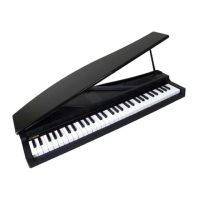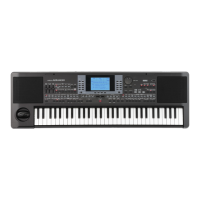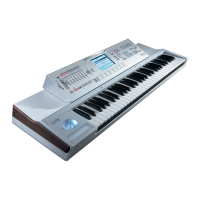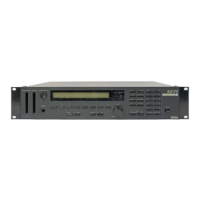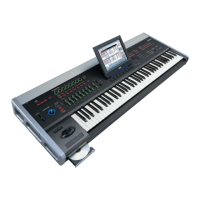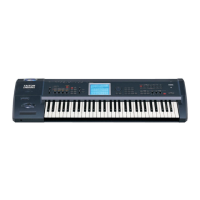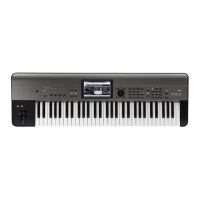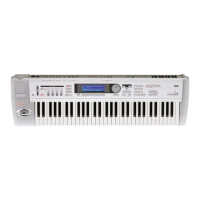11
AUDIO OUTPUTS
You can send the sound to an external amplification
system, insteadoftheinternalspeakers. Thisisuseful
whenrecording,orwhenplayinglive.
Stereo. Connect two mono cables to the L/MONO &
RIGHTOUTPUTS.Connecttheotherendofthecables
toast
ereochannelofyourmixer,twomonochannels,
two powered monitors, or the TAPE/AUX input of
your audio system. Don’t use the PHONO inputs of
youraudiosystem!
Mono. Connect a mono cable to the L/MONO OUT‐
PUT. Conne
ct the other end of the cable to a mono
channelofyo
urmixer,apoweredmonitor,orachannel
of your TAPE/AUX input of a hi‐fi system (you will
hearthatchannelonly,unlessyoucansettheamplifier
toMonomode).
AUDIO INPUTS
Youcanconnecttheoutputofanotherelectronicmusi‐
cal ins trument, an unpowered mixer
, or any audio
devicetotherearpanelinputjack(INPUT:stereomini‐
jack).Sincethisisaline‐levelinput,youʹllneedtousea
separatelysoldmicpreampormixerifyouʹreconnect‐
ingamic.
Usetheconnecteddevice’svolu
mecontroltoadjustthe
inputleve l.Becarefulnottomakeitdistort(or“clip”).
Hereishowtosetthevolumeoftheconnecteddevice:
•ifthesoundheardonmicroARRANGER’soutputsistoo
low,youshouldincreasetheoutputleveloftheconnec‐
teddevice.
•ifitsoundsfine,it’sok.
•ifitdistor
ts,youshouldlowerthelev
elalittle,untilthe
soundsisfineagain.
MIDI CONNECTIONS
You can play the internal sounds of your microAR‐
RANGERwithanexternal controller,i.e.amasterkey
‐
board, a MIDI guitar, a wind
controller, a MIDI
accordion,oradigitalpiano.
1. Connecta standard MIDI cable from theMIDI OUTof
your controller to the MIDI IN connector on the mic‐
roARRANGER.
2. Select a transmission MIDI channel on your control
ler.
Some controllers, like the MIDI accordions, usually
transmit on more than one channel(seemore informa‐
tionintheMI
DIchapter).
3. On the micr
oARRANGER, se
lect the MIDI Setup that
bestfitsyourcontrollerstype(see“Page4‐MIDISetup”
onpage126).
DAMPER PEDAL
Connect a Damper (Sustain) pedal to the DAMPER
connectoronthebackpanel.UseaKORGPS‐1,PS‐3or
DS‐1Hfootswitchpedal,oracompatibleone.Toswitch
theDamperpolarity,see“DamperPo
l.(DamperPolar‐
it
y)”onpage126.
DEMO
Listen to the built‐in Demo Songs to appreciate the
power of the microARRANGER. There are 16 Demo
Songstochoosefrom.
1. Press the STYLE PLAY and SONG PLAY buttons
together.TheirLEDsstartblinking.
At this point, if you don’t press any other button, all the
DemoSongswillbeplayedback.
2. Choose a page using the PAGE buttons. There are two
differentpagesintheDemomode.
3. Select a Demo Song by pressing the corresponding
VOLUME/V
ALUEbuttonaroundthedisplay.TheDemo
willautomaticallystart.
4. StoptheDemobypressingSTART/STOP
.
5. ExittheDemomodebypressingoneoftheMODEbut‐
tons.
THE MUSIC STAND
A music stand comes standard with your microAR‐
RANGER. Fit it into the two dedicated holes in the
backpane
l.
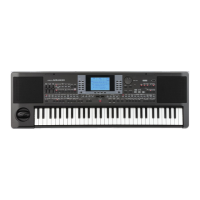
